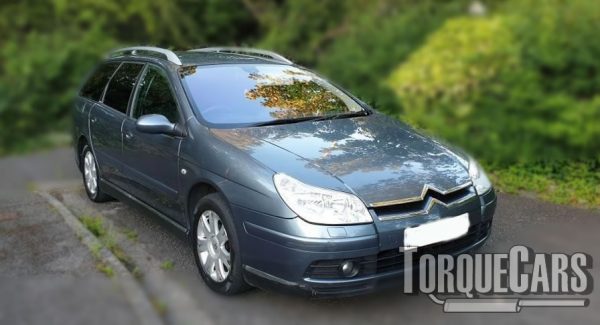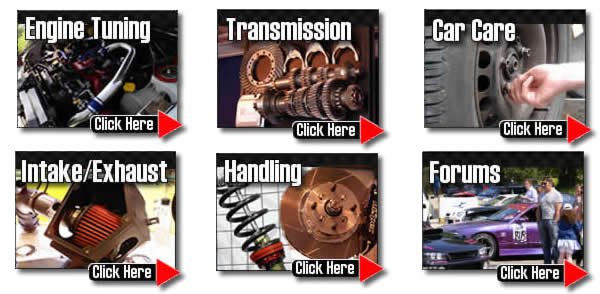Citroen C5 Tuning
"Thank you for reading my C5 tuning guide."
The large family car from Citroen, proved popular, and the revision in 2007 was largely to compete with luxury brands from Germany.
The C5 is one of those cars we are often being asked if they can be tuned or improved.
Most owners have in mind subtle upgrades that enhance the drive of the car, from engine mods, to suspension upgrades, but we have seen some pretty extreme projects out there!

You can do a lot to improve the performance of your C5 with our step by step tuning tips.
With the right mods your C5 can be transformed into a fun car. Don't waste money, do your homework and follow our unbiased guides to each performance upgrade so you don't waste your money.

Improving the handling for people often first priority in your C5 tuning project. We would go to a maximum drop of 35mm on most models. You risk rubbing on the arches if you go lower than this.
Turning our attention to the C5s engine we need to get a bit more power out of the top end.
Sadly with smaller engine sizes you are wasting your time spending money on modifications, so if this applies to you get yourself an engine swap then apply the following mods.
Power mods.
There was a wide array of engine options on the C5.The range was revised in 2007 and the engine options were tweaked a little.
Petrol engines
EW/DW family was introduced in 1998 as a replacement for the XU engine
- 1.8 L EW7 1749 cc 113hp @ 5500rpm 120lb-ft @ 4000rpm
- 1.8 L EW7 (auto) 1749cc 113hp @ 5500rpm 120lb-ft @ 4000rpm
- 2.0 L EW10 1997cc 134hp @ 6000rpm 140lb-ft @ 4100rpm
- 2.0 L EW10 hpI 1997cc 140hp @ 6000rpm 142lb-ft @ 4000rpm
- 2.0 L EW10 VVT 1997cc 141hp @ 6000rpm 150lb-ft @ 4000rpm
- 3.0 L ES9 V6 2946cc 204 hp @ 6000rpm 210 lb⋅ft @ 3750rpm
- 3.0 L ES9 V6 VVT 2946cc 208 hp @ 6000rpm 210 lb⋅ft @ 3750rpm
Diesel engines (The DW10's feature common rail injection and were branded HDI)
- 1.6 L DV6 HDi 1560cc 108hp @ 4000rpm 180lb-ft @ 1750rpm
- 2.0 L DW10 HDi 1997cc 89hp @ 4000rpm 151lb-ft @ 1900rpm
- 2.0 L DW10 HDi 1997cc 108hp @ 4000rpm 180lb-ft @ 1750rpm
- 2.0 L DW10 HDi 1997cc 134hp @ 4000rpm 240lb-ft @ 2000rpm
- 2.2 L DW12 HDi 2179cc 131hp @ 4000rpm 232lb-ft @ 2000rpm
- 2.2 L DW12 HDi 2179cc 170hp @ 4000rpm 300lb-ft @ 1750rpm
The range was revised in 2007 and the engine options were tweaked a little.
Petrol engines
- 1.8 L I4 1749 cc 125 bhp (93 kW; 127 PS)
- 1.6 L I4 1598 cc 120 bhp (89 kW; 122 PS)
- 2.0 L I4 1997 cc 140 bhp (104 kW; 142 PS)
- 1.6 L I4 1598 cc 154 bhp (115 kW; 156 PS)
- 3.0 L V6 2946 cc 211 bhp (157 kW; 214 PS)
Diesel engines
- 1.6 L dieselI4 1560 cc 109 bhp (81 kW; 111 PS)
- 1.6 L diesel I4 1560 cc 109 bhp (81 kW; 111 PS)
- 2.0 L diesel I4 1997 cc 136 bhp (101 kW; 138 PS)
- 2.0 L diesel I4 1997 cc 140 bhp (104 kW; 142 PS)
- 2.0 L diesel I4 1997 cc 161 bhp (120 kW; 163PS)
- 2.2 L diesel I4 2179 cc 170 bhp (127 kW; 172PS)
- 2.2 L diesel I4 2179 cc 200 bhp (149 kW; 203PS)
- 2.7 L diesel V6 2720 cc 208 bhp (155 kW; 211 PS)
- 3.0 L diesel V6 2992 cc 240 bhp (179 kW; 243 PS)
Getting the right motorsport modifications for your planned usage of the car is essential. Stage 3 (competition) mods just don't work well on the road and will make the car undrivable.
Please watch our introduction Video tutorial to car tuning. Be sure to subscribe and support our new channel.
How to tune your car
- Improve the handling
Focus on Suspension improvements, such as coilovers and make sure the bushings are in good order and that the alignment is correct. Then focus on improving the brakes, with a big disk brake conversion kit and fast road brake pads.
- Remove restrictions
Focus on the intake and exhaust with filters being the common point of restriction in a tuned car. Intercoolers may also become restrictive on turbo engines so this may also need to be uprated.
- Burn more fuel & air
Increase the fuelling so it matches the air coming into the engine. The ratio is important so you need to improve the fuel pump and injectors, so the head mods, big valve conversions, fast road camshafts and forced induction upgrades extra supply of air is adequately met.
- Test and replace any weak parts
Weak areas are commonly the clutch, the turbocharger and pistons and crankshaft in a highly tuned engine. Makes sure these components will cope with your power aspirations.
- The Tune or Remap
A cars ECU controls the fuel, timing, spark and even the turbo in some cases, so to fully extract your gains you should remap the car last and this will fully release the power. Some cars are easy to map, and others require piggyback ECU's or aftermarket ECU's but this is the most vital step of your tuning project.
Modifying to Stage 1:
Lighter flywheel, Suspension upgrade (drop 30-40mm), Remap, Sports exhaust, Alloy wheels, Panel air filter.
Modifying to Stage 2:
Ported and polished head, Fast road cam, high flow fuel injector, Power/Sport clutch, fuel pump upgrades.
Modifying to Stage 3:
Adding or upgrading forced induction (turbo/supercharger), Engine balancing, Internal engine upgrades (pistons/head/valves), Competition cam, Sports gearbox.
Peak power is all well and good but for a drivable and fun car you need a long torque band and perhaps extending the rev range.
In this article we shall give a limited introduction to the best performance parts for your car, but we'd encourage you to spend some time on the site looking into the details of each type of performance mod.One of the most cost effective mechanical motorsport mods you can do to your NASP engine is to fit a fast road camshaft .
It maximises the intake and exhaust flow and increases the power if done right. Ideally you'd add other mods and finish up with a remap. TorqueCars would caution you not to go with a motor sport cam as this affects the engines idling and general town driving characteristics.You will need to ensure that the engine is not starved of fuel so will need to uprate the fuelling.
Using high octane fuel is another option if you find you are suffering from pinking or premature ignition on your Citroen project after fitting other modified modifications. Uprated injectors will enable you to supply sufficient fuel to the engine. If have increased your fuelling with bigger injectors you will also need to get a bigger fuel pump to supply it.
Alloy wheel upgrades.
Alloy wheels can help the brake cooling and are generally lighter than steel ones. The downside to large alloy wheels on your C5 is that you're altering your final drive ratio and this will have a detrimental effect on acceleration.
With this in mind aim to keep the overall rolling diameter of the wheel your OEM settings. In all cases avoid going bigger than 17 inches.
Intake and Exhaust Tuning.
Now we move on to the intake and exhaust and ensure proper flow through the engine. Air induction kits only help to boost power if the cars air intake is struggling! Adding an induction kit to most standard engines will see NO POWER GAIN AT ALL.
If you have heavily modified your engine and it's need for air INCREASES DRAMATICALLY then an induction kit is the answer and will help remove this restriction.
Induction kits can work well on turbo engines and larger engines (if supplied with a suitable cold air feed or air box), generally though we'd just recommend for C5 engines you should just fit a performance panel air filter preferably made from cotton.
Do not go with the biggest exhaust you can get this will slow the exhaust rate - the best for power gains are usually between 1.5 to 2.0 inches. It is the shape and material more than the bore size.
Airflow through the head can be dramatically increased with some professional flowed (porting and polishing). These should match and be setup to take into account any other engine mods.
Your clutch can seriously let you down as the power goes up if it starts to slip and the standard clutches are only ever good for power gains of up to 46%.
Fit a performance clutch to avoid power leak through the transmission. Remaps offer significant power gains on all turbo charged cars. On NASP engines the benefits are doubtful. However a remapped ECU on a NASP engine will help unleash the potential if you have done a lot of mods.
We've also come across some owners toying with twincharging applications and making some impressively high power figures.
Adding forced induction will see big power gains but this is usually too expensive to be cost effective.
Turbos are often harder to add than a supercharger. With a turbo the power curve is related exponentially to the engine speed making it more challenging to map.
The nice correlating boost and rpm characteristics of the supercharger make them simpler to map. Decreasing the engines compression ratio will allow you to add forced induction, water injection may also help prevent detonation.
What next?
For more information on Tuning your car please join us in our friendly forum where you can discuss C5 options in more detail with our C5 owners. It would also be worth reading our unbiased Citroen tuning articles to get a full grasp of the benefits and drawbacks of each modification.
Please help us improve these tips by sending us your feedback in the comments box below. We love to hear what our visitors have got up to and which mods work best for them on each model of car. Comments are used to improve the accuracy of these articles which are continually updated.
If you liked this page please share it with your friends, drop a link to it in your favourite forum or use the bookmarking options to save it to your social media profile.
Check out TorqueCars new YouTube channel, and see their awesome new content...
Feedback
Please use our forums if you wish to ask a tuning question, and please note we do not sell parts or services, we are just an online magazine.
Help us improve, leave a suggestion or tip
